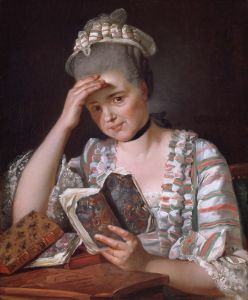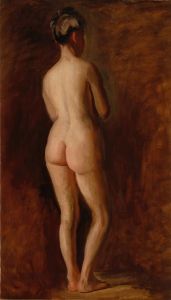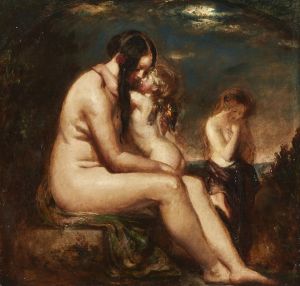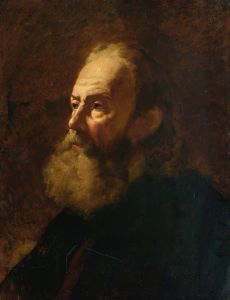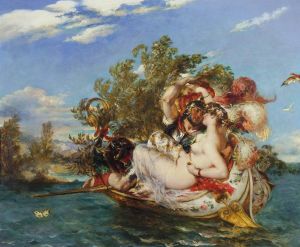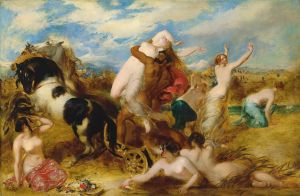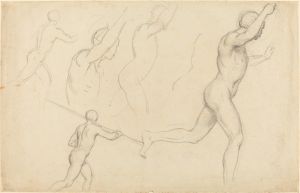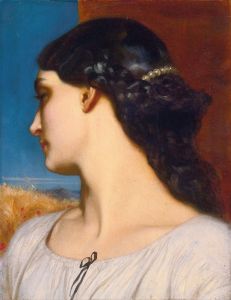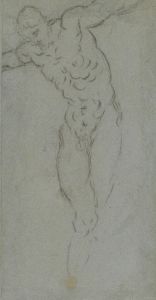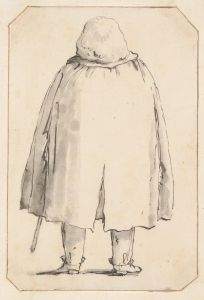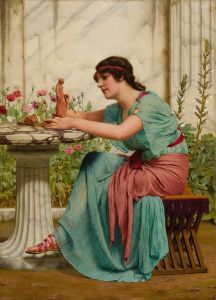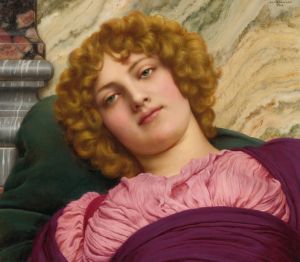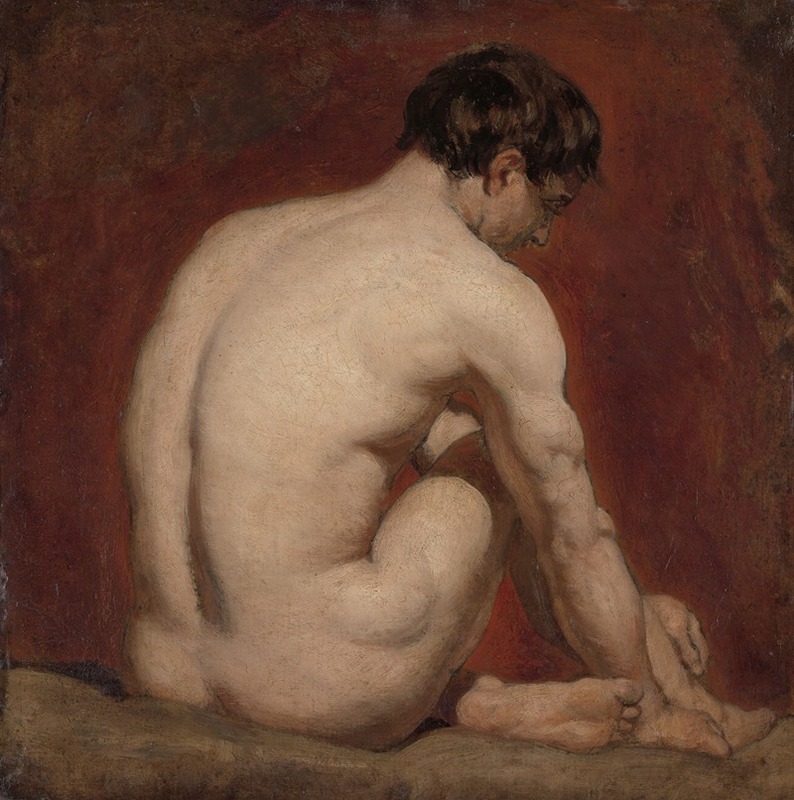
Male Nude, Kneeling, from the Back
A hand-painted replica of William Etty’s masterpiece Male Nude, Kneeling, from the Back, meticulously crafted by professional artists to capture the true essence of the original. Each piece is created with museum-quality canvas and rare mineral pigments, carefully painted by experienced artists with delicate brushstrokes and rich, layered colors to perfectly recreate the texture of the original artwork. Unlike machine-printed reproductions, this hand-painted version brings the painting to life, infused with the artist’s emotions and skill in every stroke. Whether for personal collection or home decoration, it instantly elevates the artistic atmosphere of any space.
William Etty was a notable English artist of the 19th century, renowned for his ability to capture the human form with a particular emphasis on the nude figure. One of his works, "Male Nude, Kneeling, from the Back," exemplifies his skill in rendering the human anatomy with both accuracy and sensitivity.
Etty was born in 1787 in York, England, and showed an early interest in art. He moved to London in 1807 to study at the Royal Academy of Arts, where he was influenced by the works of the Old Masters, particularly the Venetian painters like Titian and Rubens. Etty's dedication to studying the human form was evident throughout his career, and he often used life models to perfect his technique.
"Male Nude, Kneeling, from the Back" is a study that reflects Etty's commitment to the academic tradition of life drawing. The painting depicts a male figure kneeling, viewed from behind, showcasing Etty's adeptness at capturing the musculature and natural posture of the human body. The use of light and shadow in the work highlights the contours and form of the figure, demonstrating Etty's understanding of anatomy and his ability to convey the physicality of his subjects.
Etty's focus on the nude was somewhat controversial during his time. The Victorian era in Britain was characterized by a conservative attitude towards depictions of nudity, and Etty's works often sparked debate. Despite this, he remained committed to his artistic vision, believing that the human form was a worthy subject for art and that it could be depicted with dignity and respect.
Throughout his career, Etty faced criticism for what some considered the indecency of his work. However, he also garnered praise from those who appreciated his technical skill and the beauty of his compositions. His dedication to the nude form was not merely for sensationalism but was rooted in a deep appreciation for the classical traditions of art.
Etty's works, including "Male Nude, Kneeling, from the Back," are significant for their contribution to the genre of nude painting in Britain. They reflect a period of transition in British art, where traditional academic practices were being challenged and redefined. Etty's legacy is that of an artist who, despite societal constraints, pursued his passion for capturing the human form in its most natural state.
Today, Etty's works are appreciated for their historical significance and their technical mastery. "Male Nude, Kneeling, from the Back" remains an example of his dedication to the study of the human figure and his ability to convey its beauty through paint. His works are housed in various collections, including the Tate Britain and the York Art Gallery, where they continue to be studied and admired by art enthusiasts and scholars alike.





